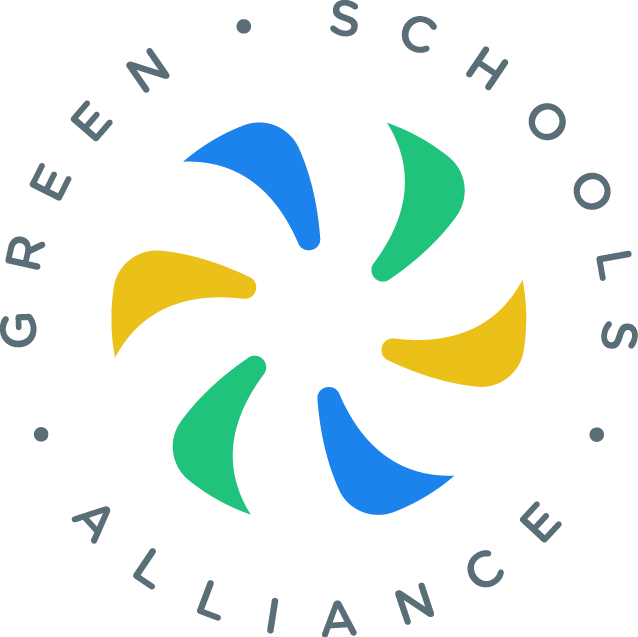Green Schools Alliance History
2006
First envisioned on World Environment Day, June 5, 2006, the Green Schools Alliance was created in response to Mayor Bloomberg’s challenge to New York City's municipal agencies to reduce their carbon footprint 30% by 2030 (as outlined in PlaNYC).
2007
On October 11, 2007, Green Schools Alliance and its first Climate Leadership Commitment were publicly introduced when 46 schools convened at the Allen-Stevenson School to explore: “What is Climate Change and What Can Schools Do About It?” This event took place with support from New York City’s Mayor's Office of Long Term Planning and Sustainability, New York State Energy Research Development Authority, Natural Resources Defense Council, Con Edison, Clinton Foundation, National Association of Independent Schools, National Business Officers Association, and individual founding member schools. Other early partners included the Association for Learning Environments (formerly CEFPI), National Schools Board Association, and National Parent Teacher Association.
The Alliance’s Climate Leadership Commitment was intended to motivate school institutions to take action to address 21st century environmental challenges through integrated sustainable and energy-smart solutions. When schools first asked, “I’ve signed the Commitment, now what?” the Alliance developed its initial measurement and tracking system to offer schools targets and resources to meet their goals.
In early 2007, the Alliance was given the opportunity to assume responsibility over the Green Cup Challenge, a program that empowers students, raises awareness about climate change and resource conservation, and unites school communities around a common goal. It was originally developed by GSA founding member schools Phillips Exeter Academy, Northfield Mount Hermon, and The Lawrenceville School.
2009
In 2009, the Alliance held the first Student Climate & Conservation Congress (Sc3), an initiative sparked by a Green Cup Challenge participant, created with support and guidance from the National Conservation Training Center (NCTC), and Alliance students and schools. Sc3’s mission is to empower outstanding student environmental leaders with the skills, knowledge, and tools to address climate change and natural resource conservation challenges and better serve their schools and communities.
From 2009 - 2016, the New York City Department of Education, followed by Chicago Public School District, the Los Angeles United School District and Houston Public Schools laid the framework for the development of the GSA District Collaborative. The Collaborative builds and shares best practices and uses their leverage to promote market transformation. By 2017, the Collaborative, represented 24 school districts, affecting almost 6,000 schools and 3.8 million children.
2014
In 2014, the Commitment evolved as a result of the Alliance’s work with NCTC and member schools, and the introduction of the United Nations General Assembly Open Working Group on Sustainable Development Goals. With the guidance of original signatory schools, the Commitment became a three-track framework that equally acknowledges resource reduction, education and culture shift to connect people to nature and create awareness about the importance of respecting and protecting all living things and wild places. The three E’s of sustainability -- environment, economics, and equity -- became the cornerstone of the Alliance’s mission and vision.
The Alliance’s early programs deeply rooted in the idea of “created by schools for schools” and its unique role as a grassroots initiative set the tone for meaningful and valuable change. Since then, we have expanded organically in response to the growing needs of our Leadership Commitment schools.
The Alliance has broadened its scope of engagement to enable greater individual participation and interaction through its peer-to-peer online community. This opportunity empowered the individual grassroots Sustainability Champions, wherever they are on their journey, to ignite change in their schools and inspire their community to progress toward a more environmentally conscious future.
2016
In response to a clear need expressed by member schools, the Green Schools Alliance sought to create an easy tool by which schools could benchmark and plan their sustainability efforts, and the provided guidance to help them achieve their goals.
In 2016, the Green Schools Alliance convened an inclusive committee of school-specific experts from independent and public schools across the US, including administrators, teachers and facilities managers, as well as data quality analysts, to collectively design a blueprint that would map out the full scope of Whole School Sustainability across actionable metrics and progressive levels of achievement.
2017
Using the metrics-blueprint mapped out by the START Committee, the Green Schools Alliance, in collaboration with building performance data analytics experts Maalka, began developing START: Sustainability Tracking and Roadmap Tool.
START is a long-needed standardized benchmarking tool designed to help pre-K to 12 schools methodically create healthier, more sustainable and equitable learning environments through clearly defined steps and activities. Additionally, START's metrics align with the United Nations Sustainable Development Goals and the US Green Ribbon program.

